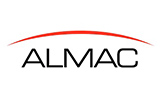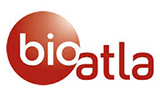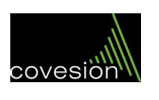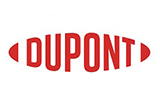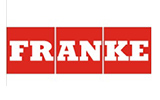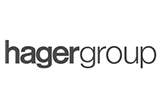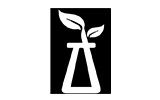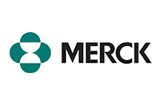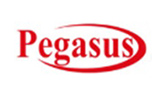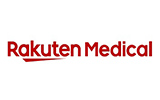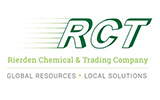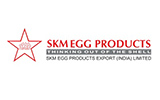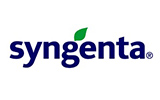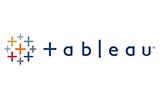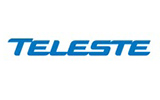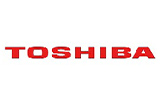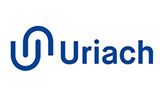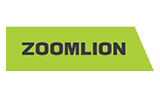Table of Contents
1. Research Framework
1.1. Research Objective
1.2. Product Overview
1.3. Market Segmentation
2. Executive Summary
3. Global Plant Phenotyping Market Insights
3.1. Industry Value Chain Analysis
3.2. DROC Analysis
3.2.1. Growth Drivers
3.2.1.1. Increasing Number of Seed Borne Diseases
3.2.1.2. Growing relevance of better crop types for sustainable crop production
3.2.2. Restraints
3.2.2.1. Low adoption in emerging economies owing to a lack of finance and a lack of essential players
3.2.3. Opportunity
3.2.3.1. New Product Development
3.2.4. Challenges
3.2.4.1. The high price of phenotyping plants
3.3. Technological Advancements/Recent Developments
3.4. Regulatory Framework
3.5. Porter's Five Forces Analysis
3.5.1. Bargaining Power of Suppliers
3.5.2. Bargaining Power of Buyers
3.5.3. Threat of New Entrants
3.5.4. Threat of Substitutes
3.5.5. Intensity of Rivalry
4. Global Plant Phenotyping Market Overview
4.1. Market Size & Forecast by Value, 2019-2029
4.1.1. By Value (USD Billion)
4.2. Market Share & Forecast
4.2.1. By Type
4.2.1.1. Products
4.2.1.1.1. Equipment
4.2.1.1.2. Software
4.2.1.1.3. Sensors
4.2.1.2. Services
4.2.2. By Application
4.2.2.1. Greenhouse
4.2.2.2. Laboratory
4.2.2.3. Field
4.2.3. By Region
4.2.3.1. North America
4.2.3.2. Europe
4.2.3.3. Asia Pacific (APAC)
4.2.3.4. Latin America (LATAM)
4.2.3.5. Middle East and Africa (MEA)
5. North America Plant Phenotyping Market
5.1. Market Size & Forecast by Value, 2019-2029
5.1.1. By Value (USD Billion)
5.2. Market Share & Forecast
5.2.1. By Type
5.2.2. By Application
5.2.3. By Country
5.2.3.1. United States
5.2.3.1.1. By Type
5.2.3.1.2. By Application
5.2.3.2. Canada
5.2.3.2.1. By Type
5.2.3.2.2. By Application
6. Europe Plant Phenotyping Market
6.1. Market Size & Forecast by Value, 2019-2029
6.1.1. By Value (USD Billion)
6.2. Market Share & Forecast
6.2.1. By Type
6.2.2. By Application
6.2.3. By Country
6.2.3.1. Germany
6.2.3.1.1. By Type
6.2.3.1.2. By Application
6.2.3.2. United Kingdom
6.2.3.2.1. By Type
6.2.3.2.2. By Application
6.2.3.3. Italy
6.2.3.3.1. By Type
6.2.3.3.2. By Application
6.2.3.4. France
6.2.3.4.1. By Type
6.2.3.4.2. By Application
6.2.3.5. Spain
6.2.3.5.1. By Type
6.2.3.5.2. By Application
6.2.3.6. Belgium
6.2.3.6.1. By Type
6.2.3.6.2. By Application
6.2.3.7. Russia
6.2.3.7.1. By Type
6.2.3.7.2. By Application
6.2.3.8. The Netherlands
6.2.3.8.1. By Type
6.2.3.8.2. By Application
6.2.3.9. Rest of Europe
6.2.3.9.1. By Type
6.2.3.9.2. By Application
7. Asia-Pacific Plant Phenotyping Market
7.1. Market Size & Forecast by Value, 2019-2029
7.1.1. By Value (USD Billion)
7.2. Market Share & Forecast
7.2.1. By Type
7.2.2. By Application
7.2.3. By Country
7.2.3.1. China
7.2.3.1.1. By Type
7.2.3.1.2. By Application
7.2.3.2. India
7.2.3.2.1. By Type
7.2.3.2.2. By Application
7.2.3.3. Japan
7.2.3.3.1. By Type
7.2.3.3.2. By Application
7.2.3.4. South Korea
7.2.3.4.1. By Type
7.2.3.4.2. By Application
7.2.3.5. Australia & New Zealand
7.2.3.5.1. By Type
7.2.3.5.2. By Application
7.2.3.6. Indonesia
7.2.3.6.1. By Type
7.2.3.6.2. By Application
7.2.3.7. Malaysia
7.2.3.7.1. By Type
7.2.3.7.2. By Application
7.2.3.8. Singapore
7.2.3.8.1. By Type
7.2.3.8.2. By Application
7.2.3.9. Vietnam
7.2.3.9.1. By Type
7.2.3.9.2. By Application
7.2.3.10. Rest of APAC
7.2.3.10.1. By Type
7.2.3.10.2. By Application
8. Latin America Plant Phenotyping Market
8.1. Market Size & Forecast by Value, 2019-2029
8.1.1. By Value (USD Billion)
8.2. Market Share & Forecast
8.2.1. By Type
8.2.2. By Application
8.2.3. By Country
8.2.3.1. Brazil
8.2.3.1.1. By Type
8.2.3.1.2. By Application
8.2.3.2. Argentina
8.2.3.2.1. By Type
8.2.3.2.2. By Application
8.2.3.3. Peru
8.2.3.3.1. By Type
8.2.3.3.2. By Application
8.2.3.4. Rest of LATAM
8.2.3.4.1. By Type
8.2.3.4.2. By Application
9. Middle East & Africa Plant Phenotyping Market
9.1. Market Size & Forecast by Value, 2019-2029
9.1.1. By Value (USD Billion)
9.2. Market Share & Forecast
9.2.1. By Type
9.2.2. By Application
9.2.3. By Country
9.2.3.1. Saudi Arabia
9.2.3.1.1. By Type
9.2.3.1.2. By Application
9.2.3.2. UAE
9.2.3.2.1. By Type
9.2.3.2.2. By Application
9.2.3.3. Qatar
9.2.3.3.1. By Type
9.2.3.3.2. By Application
9.2.3.4. Kuwait
9.2.3.4.1. By Type
9.2.3.4.2. By Application
9.2.3.5. South Africa
9.2.3.5.1. By Type
9.2.3.5.2. By Application
9.2.3.6. Nigeria
9.2.3.6.1. By Type
9.2.3.6.2. By Application
9.2.3.7. Algeria
9.2.3.7.1. By Type
9.2.3.7.2. By Application
9.2.3.8. Rest of MEA
9.2.3.8.1. By Type
9.2.3.8.2. By Application
10. Competitive Landscape
10.1. List of Key Players and Their Offerings
10.2. Global Intraoperative Imaging Company Market Share Analysis, 2022
10.3. Competitive Benchmarking, By Operating Parameters
10.4. Key Strategic Development (Mergers, Acquisitions, Partnerships, etc.)
11. Impact of Covid-19 on Global Plant Phenotyping Market
12. Company Profile (Company Overview, Financial Matrix, Competitive landscape, Key Personnel, Key Competitors, Contact Address, and Strategic Outlook)
12.1. Delta-T Devices
12.2. LemnaTec
12.3. Phenospex
12.4. Phenomix
12.5. CropDesign
12.6. WPS
12.7. Seed-X
12.8. BioVox
12.9. Heinz Walz
12.10. Agrela Ecosystems
12.11. Other Prominent Companies
13. Key Strategic Recommendations
14. Research Methodology
14.1. Qualitative Research
14.1.1. Primary & Secondary Research
14.2. Quantitative Research
14.3. Market Breakdown & Data Triangulation
14.3.1. Secondary Research
14.3.2. Primary Research
14.4. Breakdown of Primary Research Respondents, By Region
14.5. Assumption & Limitation


